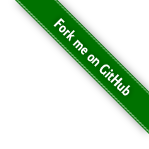#776 RF Demo Kit
Using the NWDZ Rev-01-10 RF Test Board with the NanoVNA.

Notes
The NWDZ Rev-01-10 RF Test Board is widely available from many sellers; I got mine from aliexpress for SGD$7.64 (April 2025).
It is designed for primarily for testing and learning how to use a vector network analyzer, such as the NanoVNA - see LEAP#767 for more on the NanoVNA.
RF Demo Kit Product Description
Package List:
- 1 x RF Demo Kit Board
- 2 x UFL Patch Cord
Test circuits:
- Pad 1: 30MHz low-pass filter
- Pad 2: 100MHz high-pass filter
- Pad 3: 433MHz band-pass filter (BPF)
- Pad 4: 6.5MHz notch/band-stop filter (BSF)
- Pad 5: 33Ω load SWR=1.5
- Pad 6: 75Ω load SWR=1.5
- Pad 7: Capacitor (C) circuit
- Pad 8: Inductor (L) circuit
- Pad 9: resistor-capacitor (RC) series circuit
- Pad 10: inductor-capacitor (LC) series circuit
- Pad 11: capacitor in series with parallel resistor-inductor (RLC) circuit
- Pad 12: resistor in parallel with series capacitor-inductor (RLC) circuit
- Pad 13: short
- Pad 14: open
- Pad 15: load (50Ω)
- Pad 16: through connection
- Pad 17: -5dB attenuation circuit
- Pad 18: -10dB attenuation circuit
Board front and rear:

Calibration
To calibrate the NanoVNA with the RF Board and connectors, I used the following procedure:
- set
STARTto 10kHz,ENDto 500MHz - choose
CALfrom the main menu - choose
RESET - choose
CALIBRATE - connect S11 to the “14: Open” pad, press
OPEN - connect S11 to the “13: Short” pad, press
SHORT - connect S11 to the “15: Load” pad, press
LOAD - connect S21 to the “15: Load” pad, press
ISOLN - connect S11 and S21 via the “16: Thru” pad, press
THRU - press
DONE
Tests
For the following tests, I am capturing the result with NanoVNASaver

Testing Pad 1: 30MHz low-pass filter



Testing Pad 2: 100MHz high-pass filter



Testing Pad 3: 433MHz band-pass filter (BPF)



Testing Pad 4: 6.5MHz notch/band-stop filter (BSF)



Testing Pad 5: 33Ω load SWR=1.5


Testing Pad 6: 75Ω load SWR=1.5


Testing Pad 7: Capacitor (C) circuit


Testing Pad 8: Inductor (L) circuit


Testing Pad 9: resistor-capacitor (RC) series circuit


Testing Pad 10: inductor-capacitor (LC) series circuit


Testing Pad 11: capacitor in series with parallel resistor-inductor (RLC) circuit


Testing Pad 12: resistor in parallel with series capacitor-inductor (RLC) circuit


Testing Pad 17: -5dB attenuation circuit


Testing Pad 18: -10dB attenuation circuit


Credits and References
- NanoVNA Filter Attenuator VNA RF Test Board Tester Demo Kit Module Breadboard Network Analyzer Universal Tool - aliexpress
- LEAP#767 NanoVNA
- NanoVNASaver


